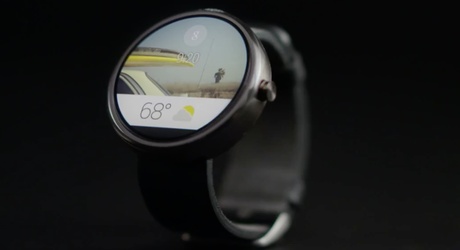Salesforce's push to get wearables into the enterprise

Analysts and industry commentators have been predicting for some time that wearable technologies will invade the enterprise space. When launching its recent Australian Tech trends 2014 report, Deloitte declared that “on-body computing devices are ready for business”.
“Deloitte predicts that smart glasses, fitness bands and watches are likely to sell about 10 million units in 2014, generating $3 billion,” said Deloitte Consulting Managing Partner, Technology Agenda Robert Hillard.
“The potential is tremendous due to hands-free, heads-up technology which reshapes how work will be done, how decisions will be made and how businesses will engage with employees, customers and partners.”
According to Deloitte, wearables allow technology to be introduced into scenarios where safety, logistics or even etiquette have dictated that laptops and smartphones are not appropriate.
“Smart glasses … are likely to gain mainstream acceptance during 2014, while other wearable devices will likely remain niche markets. The most common usage of smart glasses is likely to be any screen-based application that frees up the user’s hands for other tasks,” a statement from Deloitte said.
According to analyst firm Forrester, enterprise wearables will be mainstream by 2020. The firm predicted in January this year that “the market for company-provided wearables will be larger than the consumer market within the next five years”.
Forrester’s JP Gownder said at the time that: “Wearables aren’t just a consumer phenomenon; they have the potential to change the way organisations and workers conduct business.”
Fast growth for wearables
One Aussie app developer - b2cloud - expects its revenues from wearables to grow substantially.
In a keynote to the ad:tech conference in Sydney, the company’s MD Josh Guest said he anticipates b2cloud’s revenue from wearables to triple from 10 to 30% within the next 12 months.
“Whether it’s Google Glass, Pebble smartwatches or the range of wristband trackers now available on the market, these technologies are being used to reinvent business models in key sectors such as banking, health, communications and retail,” Guest said.
The director of ERP vendor IFS’ Labs division, David Andersson, argues that consumer demand for wearables is increasing rapidly, and that “once widespread consumer adoption takes place, the enterprise is never far behind - whether it’s ready or not”.
“Remember how quickly workforces around the world tossed aside those cumbersome Blackberry devices in favour of more consumer-friendly smartphones? The BYOD (bring your own device) trend that hit businesses in recent years was evidence enough that members of staff will take technology into their own hands if their employer isn’t providing what they want,” Andersson said.
IFS recently created a working proof of concept that it said demonstrated how notifications from IFS’s business applications can be delivered to wearable technologies.
“Using Samsung’s APIs for notification alerts, IFS connected components of its enterprise resource planning (ERP) and enterprise asset management (EAM) systems to send alerts in line with updates to certain processes. For example, field service operatives could be alerted when important items are shipped, key projects are started or completed, or even be notified when invoices are paid,” the company said.
Salesforce
Now it seems Salesforce wants to get the wearable ball rolling into the enterprise. Just last week, the company launched its Salesforce Wear Developer Pack, a kit that purportedly helps developers “connect companies with their customers through apps for wearables in entirely new ways”.
Adam Seligman, VP, developer relations at Salesforce.com, explains the kit: “All of these new devices have different application architectures, UX patterns and data flows. The Wear Developer Pack handles the identity, secure API access and plumbing necessary to connect the device to the Salesforce1 Platform, letting the developer focus on innovative new use cases.”
According to Salesforce, Wear will allow companies to create apps that connect wearable devices to “any business process”.
“Apps can be built for everything from a ‘nudge’ on a smartwatch when an urgent approval is required, to secure facilities access via a wristband, to encouraging healthy workforces through fitness challenges using fitness tracking devices,” the company said.
The pack provides Salesforce1 developers with access to a library of sample code, documentation, demonstrations and reference apps. The Salesforce Wear Developer Pack is included with all user licences of Salesforce CRM and the Salesforce Platform.
Salesforce Wear is building in support for devices like Android Wear, Fitbit, Google Glass, Pebble, Samsung Gear and others.
IoT demands alternatives as 3G sunset looms
The impending 3G shutdown is a daunting prospect for organisations across ANZ that rely on...
Broadband measurement shows online gaming stacks up
The ACCC's latest Measuring Broadband Australia report has found that consumer connections to...
BlackBerry stopping one cyber attack per minute
A new report from BlackBerry's Threat Research and Intelligence team highlights the...







